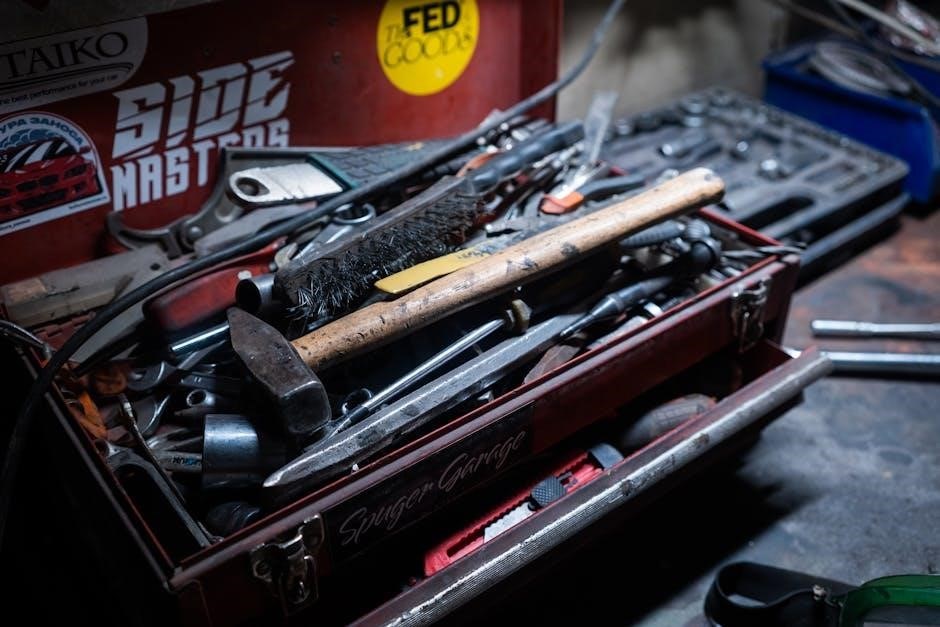Can You Put a Remote Starter on a Manual Car?

Installing a remote starter on a manual car is possible but requires careful consideration. Manual transmissions need to be in neutral with the brake engaged to ensure safe starting. Specialized kits, like those from Compustar, are designed for manual vehicles, often requiring a bypass module for immobilizer systems. Professional installation is highly recommended to avoid potential risks and ensure proper system integration. Always follow manufacturer guidelines to maintain safety and functionality.
Installing a remote starter on a manual car is a popular topic among car enthusiasts, especially in colder climates where preheating the engine is essential. While many assume remote starters are only for automatic vehicles, advancements in technology have made it possible to adapt them for manual transmissions. However, specific safety and compatibility considerations must be addressed. Manual cars require additional safeguards to prevent accidental movement when starting remotely. This includes ensuring the vehicle is in neutral gear and the brake is engaged. With the right equipment and installation, manual car owners can enjoy the convenience of remote starting while maintaining safety and functionality.

Safety Concerns with Remote Starters on Manual Cars
Remote starters on manual cars pose safety risks if not installed correctly. Manual transmissions must be in neutral with brakes engaged to prevent unintended movement. Specialized systems are required to ensure safe operation and avoid accidents.
Why Manual Transmissions Pose a Risk
Manual transmissions pose a risk with remote starters because they require the driver to physically engage the clutch and shift into gear. Without proper safety measures, the vehicle could unintentionally move when started remotely. Manual cars must be in neutral and have the brake engaged to safely remote start. If the car is not properly secured, it could roll or lurch forward, causing accidents. Additionally, bypassing the clutch and neutral safety switches can lead to unsafe conditions. This is why specialized systems are required for manual vehicles to ensure safe operation and prevent potential hazards.
The Importance of Neutral Gear and Brake Engagement
For manual cars, neutral gear and brake engagement are critical when using a remote starter. The vehicle must be in neutral to prevent unintended movement, as manual transmissions don’t automatically lock the wheels like automatics do. If the car isn’t in neutral or the brake isn’t engaged, it could roll or lurch forward when started remotely, posing a safety hazard. Modern remote starters for manual cars often include features that verify the car is in neutral and the brake is applied before starting the engine. This ensures safe operation and prevents accidents caused by improper gear selection or brake release.

Compatibility and Requirements
A compatible remote starter kit is essential for manual cars. Look for systems with bypass modules for immobilizer systems, especially in newer vehicles with anti-theft technology. Popular brands like Compustar, Viper, and Avital offer solutions designed for manual transmissions, ensuring safe and proper integration with your vehicle’s specific requirements.
Choosing the Right Remote Starter Kit for Manual Cars
When selecting a remote starter kit for a manual car, ensure it is specifically designed for manual transmissions. Popular brands like Compustar, Viper, and Avital offer kits tailored for manual vehicles, addressing unique challenges. These systems often include features like clutch pedal simulation and neutral gear detection to ensure safe operation. Verify compatibility with your vehicle’s make, model, and year, and check if a bypass module is required for immobilizer systems. Always consult with professionals to confirm the kit meets your car’s specific needs, as not all remote starters are suitable for manual transmissions.
Vehicle Wiring Diagrams and Bypass Modules
Vehicle wiring diagrams are essential for a successful remote starter installation. They provide a detailed map of your car’s electrical system, ensuring proper connections. For manual cars, a bypass module is often required to circumvent the immobilizer system, which prevents hotwiring. This module tricks the car into thinking the key is present. Accurate wiring is critical to avoid damaging the vehicle’s electrical components. Consult your car’s wiring diagram and consider professional help if unsure. Bypass modules vary by vehicle, so choose one compatible with your make and model to ensure seamless integration with the remote starter system.

Installation Process
Installation involves placing the remote starter brain in a hidden location, such as behind the dashboard or under the seat. Connect wiring to the ignition, neutral safety switch, and clutch safety switch for proper functionality. Ensure all connections are secure to avoid electrical issues and maintain reliable operation.
Step-by-Step Guide to Installing a Remote Starter Brain
Locate and mount the remote starter brain in a secure, hidden area like behind the dashboard or under the seat. Connect the ignition wires to the appropriate terminals, ensuring proper power supply; 2. Link the neutral safety switch and clutch safety switch wires to prevent accidental starts. 3. Program the remote starter according to the manufacturer’s instructions, setting parameters for runtime and safety features. 4. Test the system to ensure it starts the engine only when the vehicle is in neutral with the brake engaged. 5. Secure all wiring with tape or ties to prevent damage and ensure reliable operation.
Connecting Wiring to Ignition and Safety Switches
Connect the remote starter brain to the car’s ignition system by identifying and linking the correct ignition wires. Ensure the neutral safety switch and clutch safety switch wires are properly connected to prevent the engine from starting in gear. These switches confirm the vehicle is in neutral and the clutch is pressed, ensuring safe operation. Use a wiring diagram specific to your vehicle for accurate connections. For modern cars, install a bypass module to integrate with the immobilizer system. Double-check all connections to avoid errors and ensure the system functions reliably. This step is critical for both safety and proper functionality.

Popular Remote Starter Brands for Manual Cars
Compustar, Viper, and Avital are top choices for manual cars. Compustar offers manual-specific systems, while Viper provides advanced features and reliability. Avital is known for ease of use and compatibility.
Compustar, Viper, and Avital: What They Offer
Compustar, Viper, and Avital are leading brands offering remote starters for manual cars. Compustar is known for its manual-transmission-specific systems, providing features like clutch pedal simulation and advanced safety protocols. Viper offers cutting-edge technology, including smartphone integration and robust security features. Avital focuses on user-friendly designs with compatibility for immobilizer systems. These brands ensure safe and reliable remote starting for manual vehicles, addressing unique challenges like neutral gear verification and brake engagement. Their solutions are tailored to provide convenience without compromising safety or functionality.

Usage Tips and Best Practices
Always ensure the vehicle is in neutral and the brake is engaged before remote starting. Test the system post-installation to confirm proper function. Regularly check connections and settings to maintain reliability and safety.
Ensuring Safe Operation of a Remote Starter
Safe operation of a remote starter on a manual car requires careful attention to safety mechanisms. Ensure the vehicle is always in neutral gear and the brake is engaged before remote starting. Use a compatible remote starter kit designed for manual transmissions, which often includes features like clutch pedal simulation. Always test the system post-installation to confirm proper function. Regularly inspect wiring and connections to prevent malfunctions. Follow manufacturer guidelines for operation, and avoid starting the vehicle in uncontrolled environments. Proper installation and maintenance are crucial to ensure the system operates safely and reliably.

Legal and Ethical Considerations
Check local laws regarding remote starters, as some jurisdictions may restrict their use. Ensure compliance with vehicle immobilizer systems to maintain ethical standards and prevent theft risks.
Is It Legal to Install a Remote Starter on a Manual Car?
Installing a remote starter on a manual car is generally legal, but local regulations may vary. Ensure the system meets safety standards, such as requiring the vehicle to be in neutral and the brake engaged. Some jurisdictions may have specific rules about remote starting vehicles, especially regarding immobilizers and anti-theft systems. Always verify with local authorities to confirm compliance. Additionally, check your vehicle’s insurance policy, as modifications like remote starters may affect coverage. Proper installation and adherence to safety protocols are essential to avoid legal or ethical concerns.

DIY vs. Professional Installation
While DIY installation is possible, it can be complex, especially for manual cars. Professional installers ensure safety, proper wiring, and compatibility, avoiding potential risks and ensuring reliability.
When to Choose a Professional Installer
Installing a remote starter on a manual car is complex and requires expertise. Professionals ensure proper wiring, safety protocols, and compatibility with your vehicle’s systems. They handle specialized requirements like neutral gear sensors and brake bypass modules, crucial for safe operation. Improper installation can lead to issues like unintended movement or electrical damage. Experts also ensure compliance with manufacturer guidelines and local regulations. If you’re unsure about the process or lack experience with automotive electronics, hiring a professional installer is strongly recommended to guarantee reliability and safety.

Maintenance and Troubleshooting
Maintenance involves regular checks of wiring and connections to ensure proper function. Troubleshooting common issues like faulty sensors or failed starts requires diagnostic tools. Always refer to the manufacturer’s guidelines for specific solutions and ensure the system is updated with the latest software. Professional assistance may be needed for complex problems to prevent further damage and ensure safety.
Common Issues and Solutions
Common issues with remote starters on manual cars include the vehicle rolling due to not being in neutral, faulty clutch or brake sensors, and dead batteries. To address these, ensure the car is securely in neutral with the brake engaged. Check wiring connections and sensors regularly for damage or malfunctions; If the remote starter fails to engage, verify the battery strength and ensure all safety switches are functioning. Software glitches can often be resolved by resetting the system or updating the firmware. Always consult the user manual or contact a professional for persistent issues to maintain reliability and safety.
Installing a remote starter on a manual car is feasible with proper precautions. Ensuring the vehicle is in neutral and the brake is engaged is crucial for safety. Compatible kits, like those from Compustar, and professional installation are recommended to avoid risks. Always follow manufacturer guidelines to ensure functionality and safety. While challenges exist, careful planning and adherence to best practices make remote starters a convenient addition to manual cars. This setup offers comfort and peace of mind, especially in harsh weather conditions, while maintaining vehicle security and operational reliability.
